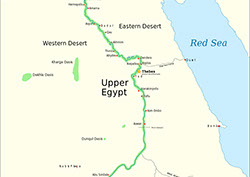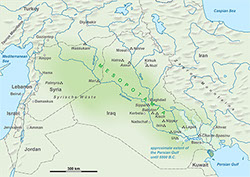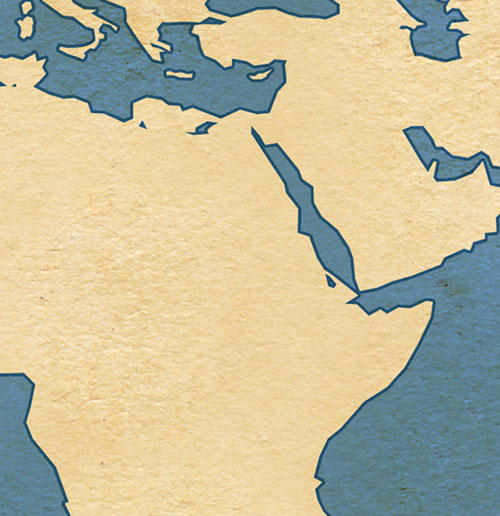
Unit 1: The Origin of Civilization
Click the flag to reveal information
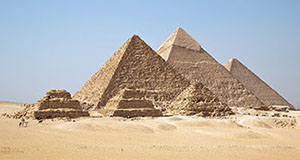
Ancient Egypt
As agriculture depends on water resources in order to be successful, it is no wonder that the Egyptian civilization developed along the banks of the Nile River. The fertile soil deposited each year by the annual flood, allowed for a predominately dry, desert area to cultivate crops effectively and predictably for thousands of years. Out of Egypt emerged one of the first writing systems, hieroglyphs, and a strong political system that would endure for three thousand years.
In studying the early Egyptian civilization, historians categorize events into the following chronological periods:
- Predynastic Period (ca. 5000 – 3100 BCE)
- Archaic Period (ca. 3100 – 2686 BCE)
- Old Kingdom (ca. 2686 – 2181 BCE)
- First Intermediate Period (ca. 2181 – 2055 BCE)
- Middle Kingdom (ca. 2055 – 1786 BCE)
- Second Intermediate Period (ca. 1786 – 1567 BCE)
- New Kingdom (ca. 1567 – 1085 BCE)
- Third Intermediate Period (ca. 1085 – 664 BCE)
- Late Period (664 – 332 BCE)
The three periods of centralized rule: the Old Kingdom, Middle Kingdom, and New Kingdom are periods of growth and often impressive architectural and cultural accomplishments. During the Old Kingdom, the Great Pyramids at Giza are constructed – one of the wonders of the ancient world. By the time of the New Kingdom, Egypt created an imperial system, ruling areas of the modern Middle East as well as regions to the south. Monumental temples, such as Karnak Temple, and tombs, like those in the Valley of the Kings, signify the wealth and power of New Kingdom Egypt. While Egyptian civilization continues into the first millennium BCE, a series of foreign invasions, including Nubians, Assyrians, and Persians, sets the stage for the conquest of Egypt by Alexander the Great in 332 BCE.
Click the map below to enlarge.
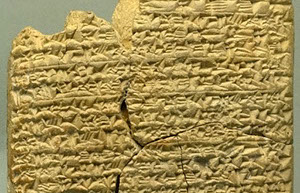
Ancient Mesopotamia
One of the first civilizations that arose out of the Neolithic Era was Mesopotamia, located in the area between the Tigris and the Euphrates Rivers in what is today’s Middle East. The area between the rivers is known as the Fertile Crescent, as its rich soil is conducive to the successful growth of crops. Mesopotamia, though considered an early civilization, or even as the “cradle of civilization” for its development of cities and writing, was segmented as a result of various cultures all claiming stake in one location. Scholars divide Mesopotamian history in the following periods based on the ruling culture of the time:
- Sumerians (ca. 3500-c. 2350 BCE)
- Akkadians (ca. 2332-2180 BCE)
- Sumerian Reniassance (Ur III) (ca. 2047-1750 BCE)
- Babylonians (ca. 1792- 1400 BCE)
- Assyrians (ca. 1400-600 BCE)
- Neo-Babylonians (ca. 600-539 BCE)
- Persians (ca. 539-c. 330 BCE)
The original political organization of Mesopotamia consisted of a series of city states ruled by a people known as the Sumerians. The Sumerians constructed monumental mud-brick temples known as ziggurats and developed one of the world’s first writing systems. The rising power of the Akkadians unified Mesopotamia, reaching a high point with the reign of Naram-Sin. Following a Renaissance of Sumerian art and architecture during the Ur III Period, a dynasty of kings from Bablyon rules Mesopotamia. Among the most famous kings of the Babylonian Dynasty is king Hammurabi (ca. 1792-1750 BCE), whose law code still survives today. A new imperial power, Assyria, uses improved military technology and strategy to create a large empire in the Middle East. Prior to becoming part of the large empire of Alexander the Great, Mesopotamia is ruled by the Persian Empire.
Click the map below to enlarge.
